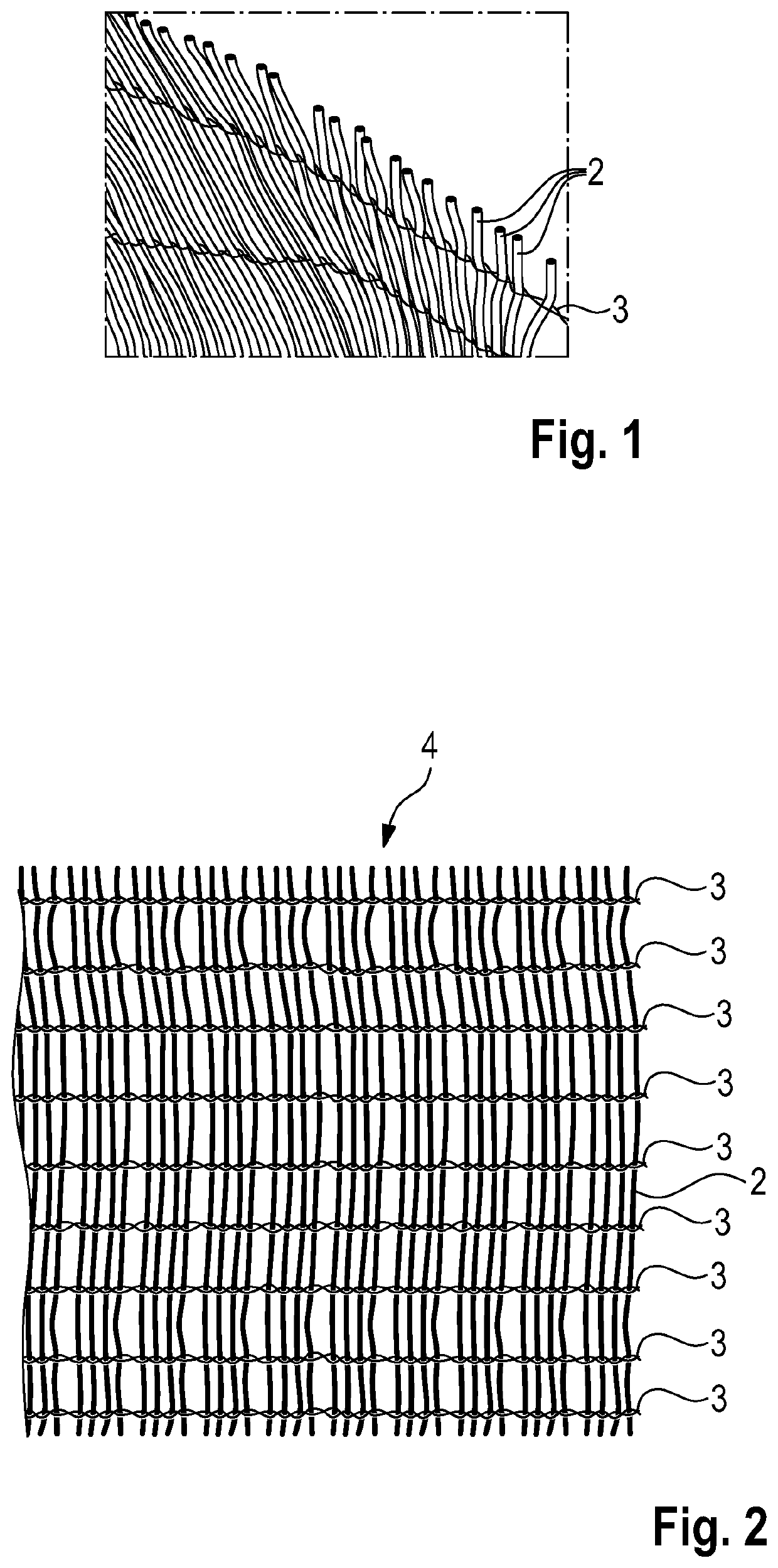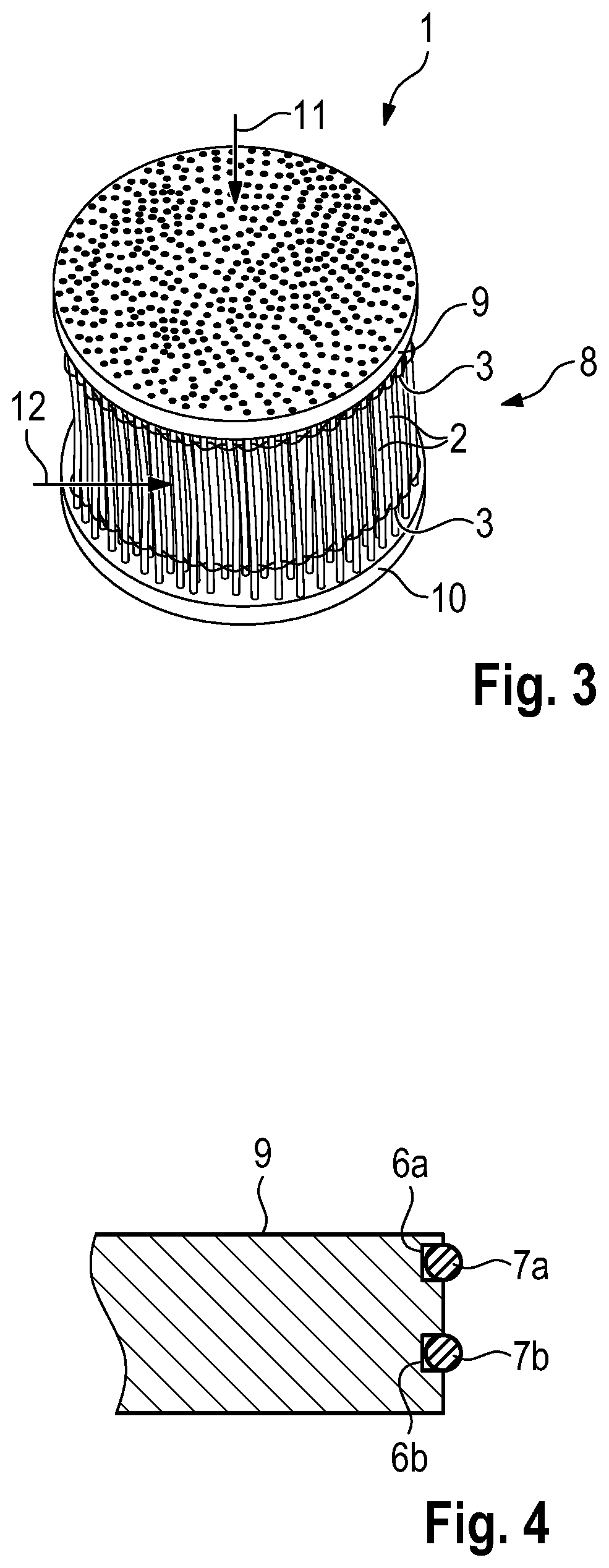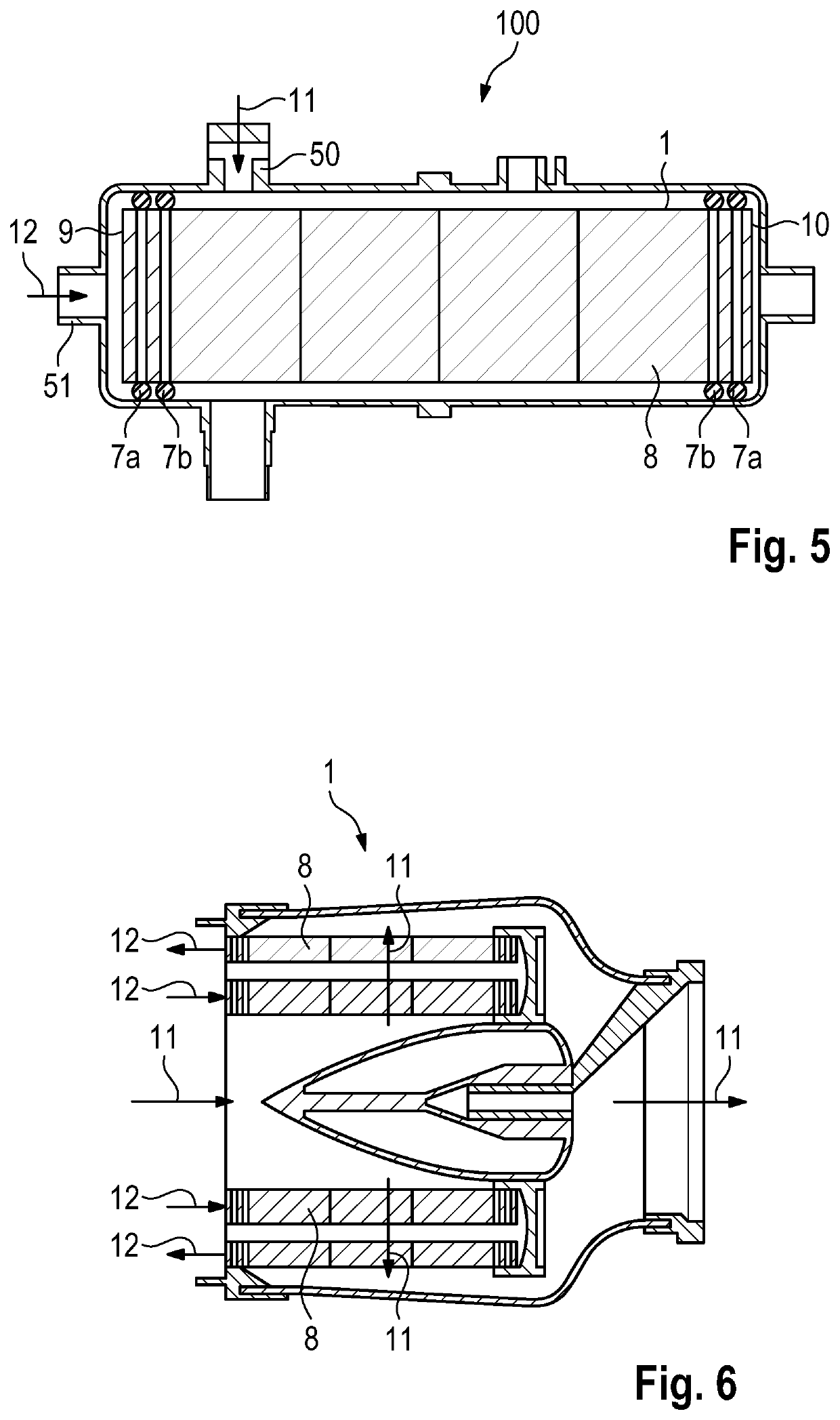Method for producing a microchannel bundle heat exchanger
a heat exchanger and microchannel technology, applied in indirect heat exchangers, lighting and heating apparatus, weaving, etc., can solve the problems of microchannel bundle heat exchanger, small pressure loss of cooling medium, and often high mass of heat exchangers
- Summary
- Abstract
- Description
- Claims
- Application Information
AI Technical Summary
Benefits of technology
Problems solved by technology
Method used
Image
Examples
Embodiment Construction
[0031]A method for producing a microchannel bundle heat exchanger 1 includes a step of providing a multiplicity of tubular microchannels 2. The tubular microchannels 2 preferably are composed of a flexible and elastic plastics material. Thus, the microchannel bundle heat exchanger 1 can be designed in a particularly weight-optimized manner. Suitable plastics materials are in particular polyether ether ketone, polyether ketone ketone, or polyimide. The polyimide can be configured, for example, as polysuccinimide (PSI) and / or polybismaleimide (PBMI) and / or polyoxadiazobenzimidazole (PBO) and / or polyimide sulfone (PISO) and / or polymethacrylimide (PMI) and / or as any other plastics material having an imide group. The tubular microchannels 2 may be extruded in the production of the microchannel bundle heat exchanger 1. Extruding is provided when the tubular microchannels are composed of PEEK or PEKK. Alternatively, the tubular microchannels can be dip-molded. Such a production method pref...
PUM
| Property | Measurement | Unit |
|---|---|---|
| diameter | aaaaa | aaaaa |
| diameter | aaaaa | aaaaa |
| thickness | aaaaa | aaaaa |
Abstract
Description
Claims
Application Information
 Login to View More
Login to View More - R&D
- Intellectual Property
- Life Sciences
- Materials
- Tech Scout
- Unparalleled Data Quality
- Higher Quality Content
- 60% Fewer Hallucinations
Browse by: Latest US Patents, China's latest patents, Technical Efficacy Thesaurus, Application Domain, Technology Topic, Popular Technical Reports.
© 2025 PatSnap. All rights reserved.Legal|Privacy policy|Modern Slavery Act Transparency Statement|Sitemap|About US| Contact US: help@patsnap.com



